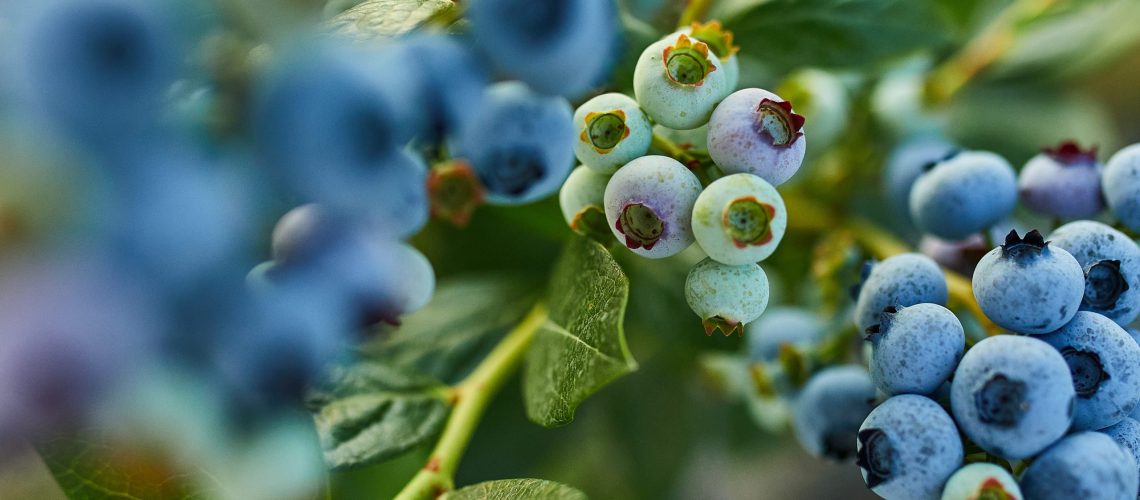Written by: Nina du Toit
Horticulturist
Carbohydrates produced during photosyn- thesis are widely recognised in plants for their crucial significance as energy sources and carbon foundations for organic molecules and storage components. They help with flower development, fruit set completion, berry growth, and shoot and root growth, among other things.
Carbohydrates are synthesised by photosyn- thesising leaves (carbohydrate sources) and delivered to non-photosynthetic tree organs such as flowers and roots via mass-flow in the phloem (carbohydrate sinks). The supply of carbohydrates to developing organs like flowers is supported by leaves and roots, but if there are insufficient carbohydrates stored, flower development and fruit set are limited. Throughout the season, carbohydrates are necessary for plant growth and fruit produc- tion. As a result, understanding the carbohy- drate status of the crop is crucial for proper management.
THE ROLE OF DIFFERENT ELEMENTS ON CARBOHYDRATES IN BLUEBERRY PLANTS
Potassium
Potassium plays an important role in the regu- lation of plant cell osmotic potential, which includes the opening and closing of the stomata. Many enzymes involved in respiration and photosynthesis are also activated by potassium. It is also responsible for sugar export from the mesophyll cells to the phloem, making it impor- tant for sugar transport to the developing organs such as flowers and fruit. Therefore, it is impor- tant to start increasing potassium levels before flowering to ensure adequate amounts of sugar reach the flowers.
Sugars tend to accumulate in the leaf when potassium is deficient. Under potassium deficiency, starch levels may be low because amylase and acid invertase enzyme activity increases, which is responsible for the break- down of starch to soluble sugars. This effect of potassium deficiency on carbohydrate metabolism could explain why fruits are smaller.
Magnesium
Magnesium is an important element for optimally photosynthesising leaves. It is the central atom in the chlorophyll molecule’s ring structure and deficiencies have a direct influence on photosynthesis and therefore carbohydrates. Magnesium, along with potassium, is responsible for the export of sugars from the mesophyll cells to the phloem. Magnesium deficiency leads to direct loss in sugar production, reduces sugar movement and causes over-production of reactive oxygen species (damaging compounds).
Phosphorus
Phosphorus is a vital component of ATP, the “energy unit” of plants and a deficiency will limit plant productivity. A deficiency will have a direct influence on the photosynthetic machinery, which will indirectly have an influence on carbohydrate production.
Zinc
Many enzymes require zinc ions for their activity, and zinc is required for chlorophyll biosynthesis. Therefore, limiting carbohydrate production in source leaves is the result during periods of zinc deficiency.
Manganese
The major symptom of manganese deficiency is interveinal chlorosis associated with the development of small necrotic spots. These symptoms contribute to limiting carbohydrate production.
WHY DO WE MEASURE CARBOHYDRATES IN BLUEBERRY PLANTS?
By using ITEST CARBOHYDRATES™ analyses, sugars and starch levels in leaves and roots can be accurately and continuously monitored at key crop phenological stages (Figure 1-4). This can aid to apply better and more timely management practices that will help to ensure optimal plant growth, yield, and fruit quality.
Phenological stage of leaf and root collection and purpose of sampling:
(i) Start of
(ii) Start of fruit
To measure the bloom and fruit set potential, carbohydrate levels affect bud break and flower quality. Developing flowers have a high demand for sugars to set fruit. High leaf and root carbo- hydrate levels will contribute to a higher fruit set potential.
(iii) Start of
(iv) Two weeks after the start of
(v) Four weeks after the start of
(vi) End of
To measure the berry growth, potential yield, and fruit quality. Starch reserves start to increase in aboveground plant organs from the start to the end of the harvesting process (Figure 1). It is noticeable that roots are important sources of carbohydrates in blueberry plants of various crop loads during flowering and fruiting (Figures 2 and 4).
The service is already being commercially applied with great success. The carbohydrate status of the blueberry plants is compared to high- and low norms that Agri Technovation developed at various phenological stages, which our blueberry specialists can use in conjunction with leaf samples (mineral analysis) to make recommendations to optimise plant growth, performance and fruit quality.






